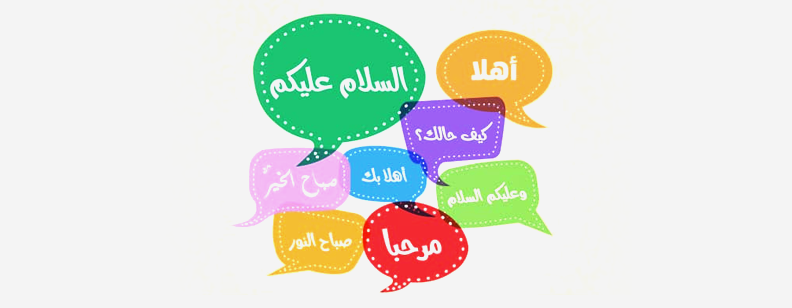Arabic language is one of the most important online language and there has been a significance increase in on-line Arabic content and the most common challenges to Arabic Translation and Localization. The internet usage has grown faster in Arabic-speaking regions compared to elsewhere since 2000, Arabic on-line content is still inexplicably small associated to other languages.
The shrinking broadband access in gulf countries and the new policy initiatives by Google and Microsoft are a few factors which may give rise to the amount of on-line Arabic content. While 220 million Arabic-speaking people spread over 20 countries, there is only less than 1% of worldwide Internet content is in the Arabic language, in contrast to 5% of the world population that speaks Arabic.
Arabic Language a high priority with Google and Microsoft.
Arabic was ranked in their top ten languages that need prioritized attention by both Google and Microsoft. Few years ago Maren was released by Microsoft as a Windows extension, which converts Arabic written in Roman characters into Arabic script. According to Microsoft’s page views after Internet Explorer 8 it is the second most popular service used. It was announced in April this year by Google’s regional marketing manager said “One of our biggest missions is to enable Arabic users to find the right tools to enrich Arabic content. It would be great to see more e-commerce in the region, more publishers, more news sites. We are committed to help them.”
Arabic Translation initiatives achieving great strides in producing more Arabic Literature.
Abu Dhabi Authority for culture & Heritage launched a major cultural and commercial translation and publishing initiative called Kalima which funds the translation, publication and distribution of high quality foreign writing into Arabic. Kalima selects 100 candidate titles of classic, contemporary and modern writing from around the world to be translated into Arabic every year. Kalima also supports marketing and distribution initiatives by introducing new distribution channels and promoting the Arabic book industry internationally through investment in translation as a profession.
Increasing on-line access in the Arabic-speaking world.
The first ever scripts to be registered were in Egypt and Saudi Arabia last year with domain names written in the right-to-left Arabic script. Use of non-Latin script to be used in web addresses was allowed by the global Internet regulator, in November of last year.
Internet access is becoming more reasonably priced in Egypt where the use of Internet on mobile devices is flourishing. Egypt is planning a $1 billion upgrade to its broadband competences over the next 4 years; this will quadruple Internet penetration to 20% of the residents.
Increased global awareness of the importance of on-line Arabic language content
Most international companies in the Arabic region and elsewhere had their websites, marketing materials and tech manuals in the English language only till after the importance of Arabic online content was realized recently. International firms now realize that they must provide Arabic content and localize their on-line content and websites into the Arabic language hence be successful in this huge and rich marketplace:
The majority of Arabic-speaking people are not fluent in the English language.
Arabic culture is significantly different from western or Asian culture; professional localization services and copy writing are needed to address the needs of consumers from this historically rich culture.
The production of smartphones and devices that support wifi on the go has made companies realize that they must communicate with consumers in the Middle East/North Africa (MENA) in their native, Arabic language.
Read Also: Arabic: A beautiful, Complex and Important Language
Arabic Translation and Localization Challenges
Very little modern scientific or technical writing originated in Arabic, which creates a shortage of equivalent terminology. While it is not easy to express some computing or technical terms in the Arabic language, a qualified linguist can create custom Arabic terms that accurately express the exact meanings of the source language terms.
Many technical terms are translated into the Arabic language through transliteration, or “coining a phrase”. This practice makes it challenging to find standards for technical terms commonly used in English.
Arabic is a very rich language in term of idioms, accents, registers and styles. Variations in Arabic dialects were influenced by historic and geographic factors. For this reason, it is critical to identify the regional locale of your target audience.
Arabic is a highly expressive language, with many alternate ways to express a message. Machine translation and “cheap” linguistic resources do not work well with this language.
The Arabic Language is bi-directional (Right-to-Left), which will affect page layout and website user interface. For instance the order of table columns must reverse, marginal graphics will “flip”, changing places with the accompanying text.
Arabic DTP (Desktop Publishing) is more labor intensive, as manuals, leaflets and flyers required reversed page order. In some cases, photos and images may have elements that direct the reader’s attention towards the outer edge of the page instead of towards the spine of the book. Different photos and images may be required, along with the services of highly professional Arabic Desktop Publishing specialists and graphic designers.
There is still a shortage of professional Arabic linguists who have access to the required linguistic computing environment and Translation Memory (TM) tools. This is a compelling reason to work with a translation/localization partner who frequently works with Arabic language projects.
Websites or software that perform e-Commerce transactions have additional user interface requirements in Arabic: contextual analysis, rendering and shaping, alternative numeric display, Hijri dates, character extenders for justified text, neutral characters, etc. This is one more reason that it is critical that your Arabic project translation/localization partner must have extensive experience working with Arabic localization.
Take a look at how we helped our client by localizing their project for Arabic language. Click here to read the complete case study



